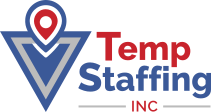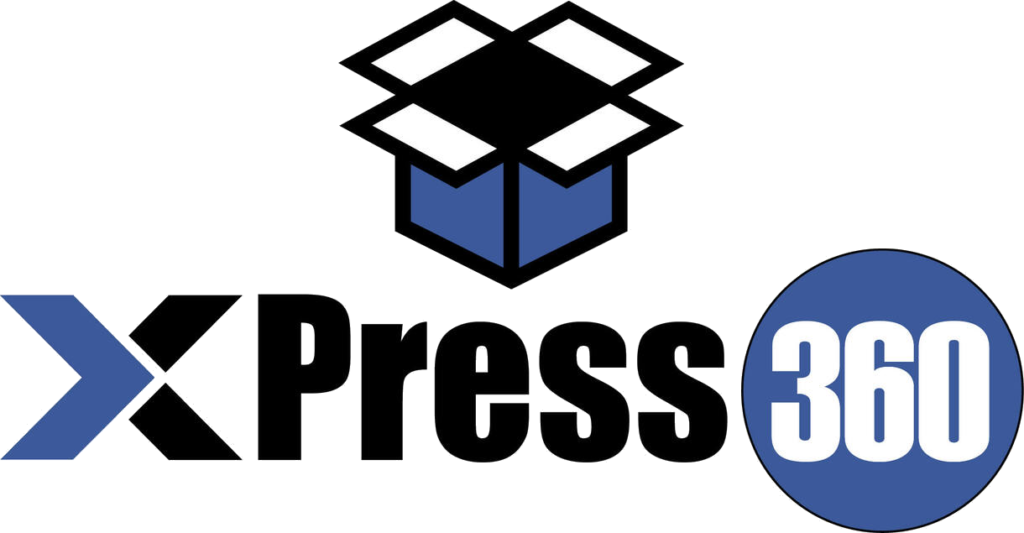Before we can look at what the future of temp staffing holds, we first have to understand what the temporary staffing and employment industry is. When workers are employed for a limited time or a specific project, this is classified as temporary by many staffing agencies. In this guide we will explore what the future holds for temporary staffing, the temporary staffing industry, and temporary staffing firms.
As Temp Staffing Inc. continues to look ahead, we can’t forget how we started. This staffing agency originated from our experience in the understaffed warehousing and logistics sector. Motivated to overcome this challenge, we created Temp Staffing Inc. to provide a solution not only for ourselves but for the entire industry.
Find Out If Temp Staffing Inc. Is The Temp Staffing Solution For Your Staffing Needs!
Evolution of Temp Staffing
Temp staffing has evolved significantly over the decades. In the early days, temporary staffing focused on clerical and manual labor. By the 1980s to 1990s there was a rise in professional and specialized temporary roles due to economic uncertainty and cost-cutting initiatives. The 2000s saw the rise in globalization, technological advancements, and the gig economy. These factors further increased the demand for flexible work arrangements, leading to a boom in temp staffing and freelance platforms.
Significance in the Current Job Market
In today’s dynamic job market, temporary staffing allows companies to adjust their workforce quickly based on their changing needs and project demands. No longer needing to commit to full-time employees has reduced the expenses of training, overhead, and providing benefits. All this while providing industries with access to talent and specific skills.
Temporary workers currently have the flexibility and control that comes with a healthy work-life balance. The current job market also allows temporary staff to acquire new skills and experience across different projects and industries. Then if they would like, it works as a bridge between permanent jobs.
Current Landscape
Temp staffing is no longer just a stopgap measure for businesses or a side hustle for temporary candidates. Through temporary staffing agencies, it’s become a thriving ecosystem that’s reshaping the entire employment landscape. The temporary staffing industry is offering flexibility, agility, and specialized skills to an ever-growing market. Let’s dive into the current state of temp staffing, exploring its size, reach, and the unique challenges and opportunities it presents.
Statistics and Market Size
The global staffing market is estimated to reach a staggering USD 1778.29 billion by 2030, growing at a compound annual growth rate (CAGR) of 12.7% from 2022 to 2030. With that said, The United States currently leads the pack, with the temporary and contract staffing industry generating USD 218 billion in revenue in 2022 and employing an average of 2.5 million temporary and contract workers per week.
Industries Embracing Temp Staffing
Certain sectors are embracing temp staffing more than others. Healthcare, information technology, and professional services account for a significant portion of the temp workforce.
- Healthcare: Hospitals and clinics use temporary healthcare staffing services such as nurses, doctors, and administrative staff to fill staffing gaps and manage seasonal fluctuations.
- IT: Tech companies leverage temp programmers, developers, and cybersecurity experts from temp staffing companies for specialized projects or to meet peak demand and industry growth.
- Professional Services: Accounting firms, consulting agencies, and marketing teams tap into the temp pool for project-based roles and qualified candidates like accountants, analysts, and graphic designers.
- Logistics and Warehousing: Warehouses and delivery companies hire temporary candidates during peak seasons or for specific tasks like packing and shipping.
- Retail: The holiday season, back-to-school sales, and other busy periods see a surge in demand for temporary retail staff.
Advantages and Challenges
As the lines between traditional employment and the gig economy continue to blur, temp staffing has the potential to offer a win-win situation for both businesses and individuals seeking flexibility, skill development, and a dynamic work environment.
Advantages
Temporary employment can benefit both businesses and temporary candidates. For businesses, it offers the flexibility to adjust workforce size while meeting changing demands without long-term commitments. This flexibility leads to cost savings on overhead, training, and benefits. Temporary staffing agencies provide access to specialized skills for short-term projects.
For workers, temporary employment promotes work-life balance, offering freedom and control over schedules to explore diverse career paths. The symbiotic relationship between businesses and temporary workers enhances the contemporary work environment.
Disadvantages
Despite the advantages, temporary employment comes with its share of challenges that both temporary employees and businesses must navigate. Job security and benefits are often lacking, which then leaves temporary candidates without stability. Irregular schedules and project-based pay contribute to income instability. Because of this, there’s potential for exploitation by unscrupulous agencies or employers.
Meeting labor market demands requires proactive skill development and training therefore a comprehensive approach to skill development is needed to address the complexities of temporary employment.
As Temp Staffing Inc. grows in size and capabilities, our core principle remains unchanged: recognizing that the workforce is integral. While we continue to expand our influence and improve operations, our commitment centers on identifying, supporting, retaining, and assisting temporary employees in securing opportunities within our network.
Contact Us To Find Out If Temp Staffing Inc. Is The Temp Staffing Solution For You!
Technology Integration
Technology, particularly automation and artificial intelligence (AI), is playing a central role in making the temporary staffing and hiring process more efficient, accurate, and personalized.
Automation in Temp Staffing
Let’s explore how automation is shaping the future of temp staffing:
- Streamlined Recruitment and Onboarding: Automated platforms handle tasks like job posting, candidate screening, scheduling interviews, and document processing, saving time and resources for both staffing agencies and businesses.
- Improved Skill Matching: Algorithms analyze candidate profiles and job requirements to identify the best fit, ensuring faster, more precise placements.
- Payroll and Compliance Management: Automated systems ensure accurate payroll calculations, tax deductions, and compliance with labor regulations, reducing the risk of errors and paperwork headaches.
AI and Machine Learning Applications
Let’s explore how AI and machine learning are shaping the future of temp staffing:
- Predictive Workforce Analytics: AI algorithms analyze historical data and market trends to anticipate future workforce needs, helping companies plan their temp staffing requirements more effectively.
- Skill Gap Identification and Training: Machine learning can identify skills gaps within the temp workforce and recommend relevant training programs, ensuring workers are equipped for future opportunities.
- Performance Tracking and Feedback: AI systems can track worker performance based on data from project management tools and client feedback, providing valuable insights for continuous improvement.
Regulatory Environment
The temporary staffing industry operates within a complex regulatory environment. Legislative changes, compliance challenges, and their impact on temp workers demand careful consideration from businesses, agencies, and temporary workers.
Legislative Changes
Legislative changes have had the following impact on the temporary staffing industry:
- Focus on Worker Protections: Growing concerns about worker rights and benefits within the gig economy have spurred legislative changes in several countries. For instance, California’s AB 5 law defines worker classification and eligibility for benefits, impacting the temp staffing landscape.
- International Initiatives: The International Labour Organization (ILO) promotes decent work standards, including for temporary workers, through conventions and guidelines. These initiatives shape national regulations and best practices.
- Tax and Payroll Compliance: Evolving tax regulations and complex payroll requirements for temporary workers pose compliance challenges for businesses and agencies
Compliance Challenges
Compliance challenges have had the following impact on the temporary staffing industry:
- Misclassifying Workers: Incorrectly classifying temporary workers as independent contractors can lead to legal and financial repercussions. Agencies and businesses need clear guidelines and robust systems to ensure proper classification.
- Ensuring Equal Treatment: Temporary workers must receive equal pay and benefits compared to full-time employees for similar work under certain regulations. Compliance requires careful record-keeping and adherence to relevant legislation.
- Managing Health and Safety: Ensuring a safe working environment for temporary workers remains a challenge. Clear communication of safety protocols, adequate training, and joint responsibility between agencies and workplaces are crucial.
Future Trends

The future of temp staffing appears increasingly dynamic and interwoven with broader trends shaping the modern workforce. However, the specific trends and their impact on industrial staffing will vary depending on industry, location, and technological advancements.
Gig Economy Influence
The gig economy is transforming temporary staffing, by attracting freelancers and independent contractors to short-term projects. Skill-sharing platforms and temporary staffing agencies connect businesses directly with temporary workers, bypassing traditional staffing agencies. This shift challenges temp agencies to offer niche expertise, build trust, and provide value-added services. The evolving landscape demands adaptability and innovation from both traditional agencies and emerging platforms.
Remote Work Dynamics
Remote work is reshaping temporary employment by promoting location independence and technological innovation. It has and continues to expand talent pools and facilitates global collaborations by breaking down the barriers of geography. Virtual project management tools are crucial for managing dispersed teams. However, this technological shift brings forth new challenges, particularly in terms of data security and privacy.
The interplay of location independence, economic conditions, technology, and security defines the dynamics of remote work in temporary employment.
Specialized Skill Demands
Automation is increasing the demand for specialized skills in temporary employment. Expertise in areas like AI and data analysis has created the need for continuous learning, upskilling, and reskilling for adaptability and competitiveness. Micro-credentials and portfolio-based hiring processes have been developed to recognize skills acquired through temporary projects.
This trend emphasizes the importance of ongoing learning and adaptability in the evolution of specialized skill demands in temporary employment.
Shifting Workforce Demographics
Temp staffing is being reshaped by a wave of demographic shifts in recent years, influencing who enters the temporary workforce, their expectations, and the challenges and opportunities they present.
Millennials and Gen Z in Temp Work
Millennials and Gen Z are driving the gig economy as they seek flexibility and diverse experiences. They actively choose temporary work for autonomy, project-based opportunities, and income potential. Temporary employment allows skill development and career exploration, catering to the fast-paced job market.
Work-life balance is preferred for these generations, and temporary work aligns with their desire for personal time and schedule control. This reflects a broader shift in attitudes towards work, emphasizing the appeal of flexibility and varied career experiences in today’s employment dynamics.
Aging Workforce Considerations
The aging workforce adds a layer of complexity to temporary employment. They can be predominantly observed as a talent pool in sectors like healthcare and finance. Statistics show that an increasing number of older individuals are now opting for phased retirements or temporary work. However, to remain competitive in the constantly evolving, temporary job market, older workers may find the need to engage in upskilling and reskilling initiatives. This ensures that they acquire new skills or update existing ones to meet the changing demands of temporary projects.
Evolving retirement trends and ongoing skill development highlight the many considerations in the aging demographic for temporary employment.
Diversity and Inclusion Efforts
A focus on diversity and inclusion efforts is important for fostering ethical and sustainable practices within the temporary staffing industry. Agencies and businesses must actively attract diverse talent for a workforce reflecting globalized work environments. Inclusive work environments are essential to addressing biases and discriminatory practices in recruitment. This ensures fair access, contributing to a just labor market and enhancing the success of temporary employment.
Future Challenges and Opportunities
Temp staffing is a dynamic industry forecast at a crossroads, brimming with both potential and pitfalls. As we peer into the future, it’s important to examine the road ahead with clear eyes, acknowledging the obstacles and embracing the emerging opportunities.
Anticipated Obstacles
Obstacles we can expect are:
- Regulation and Worker Protections: Balancing the flexibility of temp work with adequate worker protections and clear classification guidelines will remain a complex challenge. Regulatory frameworks need to evolve without stifling the industry’s agility.
- Ethical Concerns and Exploitation: Ensuring fair pay, benefits, and working conditions for temporary workers, particularly in the gig economy, requires continued vigilance against unethical practices and exploitation.
- Skill Gaps and Upskilling: Matching evolving business needs with the available skill set of temporary workers necessitates robust upskilling and reskilling programs to bridge potential skill gaps.
- Technological Disruption: Automation and AI may displace certain temporary jobs, requiring proactive adaptation and skill development to ensure relevance in the changing job market.
Emerging Opportunities
Opportunities we can expect to emerge are:
- Rise of Specialized Skills: Demand for highly skilled temporary workers in areas like AI, data analytics, and creative problem-solving will create lucrative opportunities for individuals with the right skills.
- Remote Work Revolution: The embrace of remote work expands the talent pool for temporary roles, fostering global collaborations and location-independent work arrangements.
- Platform-Based Matching: Efficient platforms connecting businesses directly with skilled temporary workers, bypassing traditional agencies, can enhance collaboration and streamline job finding. A temp staffing agency like Temp Staffing Inc. has bridged the gap using technological advancements and cemented their importance to the temp staffing industry.
- Micro-Credentials and Portfolio Recognition: Short-term certifications and portfolio-based hiring practices will gain traction, valuing skills and experience gained through diverse temp projects.
Adaptability in the Job Market
Adaptability is the key to success in the temporary job market. Lifelong learning, upskilling, and reskilling are essential for both businesses and temporary workers. Investing in technology serves to optimize recruitment, talent management, and skill development and when ethics is prioritized; fair treatment and transparency is ensured. This attracts top talent and ensures that the industry is realizing its productivity goals.
Collaboration among businesses, temp staffing agencies, policymakers, and educational institutions is critical for future-proof solutions in the evolving temporary staffing industry.
Summary of Future Projections
The future of temp staffing remains fluid, shaped by technological advancements, policy changes, and evolving societal trends. However, the temp staffing industry should embrace adaptability, prioritize ethical practices, and foster collaboration. Once the industry can navigate the complexities of the future it can create a thriving ecosystem that benefits both businesses and temporary staff seeking flexibility, skill development, and meaningful work opportunities.
With over 27,500 temporary staff placed during more than 25 years in the industry, come unlock the future of temp staffing with Temp Staffing Inc.







